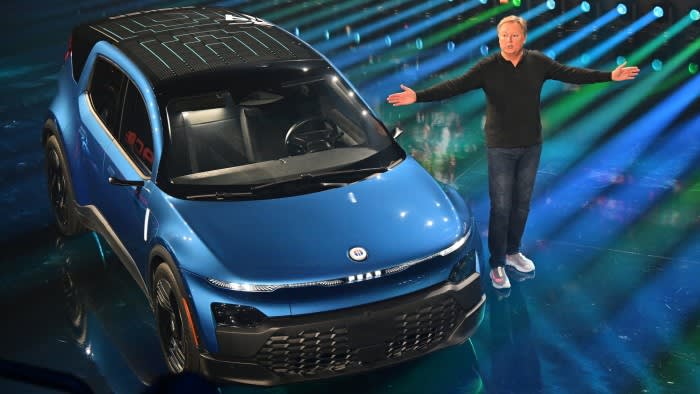EV maker Fisker files for bankruptcy

Unlock the Editor’s Digest for free
Roula Khalaf, Editor of the FT, selects her favourite stories in this weekly newsletter.
US electric vehicle maker Fisker has filed for bankruptcy after a funding deal with a large carmaker fell through — the latest EV maker to succumb to the struggles facing the sector.
The company, founded in 2016 by veteran luxury car designer Henrik Fisker, said late on Monday that “various market and macroeconomic headwinds” had “impacted our ability to operate efficiently”.
“After evaluating all options for our business, we determined that proceeding with a sale of our assets under Chapter 11 is the most viable path forward,” it added.
The move marks the latest corporate collapse in an EV sector hit by slowing growth amid supply chain problems, a price war between Tesla and Chinese manufacturers, and weaker than expected demand as motorists shun higher prices for electric cars amid enduring concerns about driving range and charging.
The UK arm of electric van group Arrival entered administration in February, while US pick-up truckmaker Lordstown Motors filed for bankruptcy last year.
After releasing its Ocean SUV roughly a year ago, Fisker failed to achieve its sales targets across Europe and the US, producing 10,193 Oceans in 2023 but only delivering 4,929 to customers. Its cars are also under investigation by the US auto safety regulator after complaints about their braking system.
Fisker in February flagged “substantial doubts” about its ability to remain in business if it could not secure financing. But a month later its attempts to get an investment from a big car manufacturer failed, forcing it to start winding down operations, pausing manufacturing and cutting its workforce.
The New York Stock Exchange said in March it was delisting Fisker shares, citing “abnormally low” price levels.
In its Chapter 11 bankruptcy petition filed in Delaware on Monday, Fisker listed assets of between $500mn and $1bn and liabilities of between $100mn and $500mn.
The filing protects Fisker from creditors, which include Adobe, Google and NBC, while it works out how to pay them.
The filing marks the second collapse of an automotive business launched by Henrik Fisker. His first company, Fisker Automotive, which made the world’s first luxury plug-in hybrid, filed for Chapter 11 protection in 2013.
Fisker had planned to develop a lifestyle pick-up and a sport crossover to complement the Ocean. In a departure from the strategies of Tesla and other EV companies, it relied on parts supplier Magna to assemble its vehicles rather than building a factory itself, and planned to make up to 50,000 vehicles a year by 2023.
The company was taken public in 2020 — as part of a flood of EV companies seeking to benefit from the pandemic-era boom in special purpose acquisition companies. The Spac, sponsored by Apollo Global Management, left Fisker with roughly $1bn in cash and in early 2021 it reached a peak valuation of £7.9bn.
But since then Fisker has been plagued by delays and quality issues, all while losing money on each vehicle sale as it needed to reduce prices to stay competitive.
The company, which in the first quarter this year failed to file its financial results with regulators because of a lack of qualified accounting professionals, last published results for the 2023 full year, when it disclosed $395mn of cash and a gross margin down 35 per cent on the previous year.


